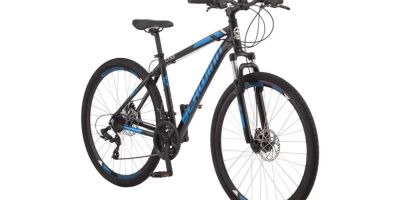
Essential Bike Tools for On-the-Road Repairs: A Cyclist's Guide
Whether you're a seasoned cyclist or just someone who enjoys the occasional ride, there’s always the possibility of something going wrong while you’re out on the road. A flat tire, a snapped chain, or even a loose bolt can turn your cycling experience from fun to frustrating in an instant. But don't worry, with the right bike tools in your saddlebag, you'll be able to handle these challenges easily and get back on track quickly. Today, I’m going to walk you through the most important bike tools you should carry with you for on-the-road repairs, ensuring you’re ready for any situation.

Conte's Bike Shop
3449 Wilson Blvd, Arlington, VA 22201, USA
1. The Essential Bike Repair Kit
Having a bike repair kit is not just about packing a bunch of random tools into a bag. It’s about having the right tools to fix the most common problems you’re likely to face while out riding. For starters, your kit should always include:
- Mini-pump or CO2 Inflator – A flat tire is one of the most common issues cyclists face. Carrying a reliable pump or CO2 inflator ensures you can quickly inflate your tires and get back on your way.
- Tire Levers – These little tools are crucial for prying the tire off the rim when you're changing a flat. They’re lightweight and small, making them easy to carry without taking up much space.
- Patches – If you’re unlucky enough to get a puncture, a patch kit will allow you to temporarily seal the hole until you can get back home or to a repair shop for a more permanent fix.
- Spare Inner Tube – A spare inner tube is a lifesaver. It’s much faster to swap out a tube than to try and patch a tire out on the road, especially if you're pressed for time or struggling with the repair.
- Multi-tool – A good multi-tool is a must. Look for one that has a variety of functions, including a chain tool, screwdrivers, and wrenches that can handle everything from tightening a loose seat post to adjusting brake calipers.
2. The Importance of a Chain Tool
A chain tool is often overlooked but can be a real lifesaver, especially if you break your chain during a ride. I’ve been there myself—a few years back, I was cycling through a remote area when my chain snapped. Without a chain tool, I would have been stranded. The great thing about modern multi-tools is that many of them come with a built-in chain tool, making it easy to repair a broken chain and get rolling again. Even if you're not very experienced with bike repairs, it's worth learning how to use a chain tool. It can mean the difference between calling for help and finishing your ride like a pro.

Bicycle Barn LLC
839 Reading Rd, East Earl, PA 17519, USA
3. Preparing for the Unexpected: Brake and Gear Adjustments
While you might not think about brake and gear issues when you're packing your tools, these are actually some of the most common problems cyclists face during longer rides. I remember once getting stuck in the middle of a ride because my brakes were rubbing against the wheel, causing resistance and making it difficult to continue. The good news? A simple multi-tool with an Allen wrench can help you make quick adjustments to your brake pads, ensuring you're back on the road in no time.
Similarly, if your gears start skipping or become out of alignment, a small screwdriver can help you make adjustments and keep everything running smoothly. If you’re planning a long ride, especially in more remote areas, these simple tools can make a huge difference in avoiding an inconvenient breakdown.
4. A Small First-Aid Kit: Not Just for the Bike
Accidents happen, and sometimes it’s not just your bike that needs attention. A small first-aid kit is a great addition to your bike tools. You don’t need to pack a full hospital kit, but having some basic supplies like bandages, antiseptic wipes, and pain relievers can be incredibly helpful if you take a fall or get a cut while handling your bike. It’s always better to be over-prepared than under-prepared, especially when you’re out on the open road.
5. Packing Smart: How to Carry Your Tools
Now that you know what tools to carry, let’s talk about how to pack them efficiently. There are a few options here:
- Saddle Bag – A saddle bag is one of the most common ways to carry bike tools. It fits neatly under your seat and provides enough space for all the essentials without weighing you down.
- Frame Bag – If you need a bit more storage space, a frame bag might be the way to go. It fits within the triangle of your bike frame and can hold a bit more gear, including your tools and snacks.
- Jersey Pockets – If you don’t want to carry a bag, some cyclists opt for carrying tools in the back pockets of their cycling jerseys. This can work well for shorter rides or when you only need a few essentials, but it can become uncomfortable on longer rides.
Whatever method you choose, just make sure that your tools are accessible. The last thing you want is to be fumbling around trying to find a tire lever when you're in a rush to fix a flat!
6. Real-Life Cycling Emergency: A Lesson Learned
Let me share a quick story with you. A few summers ago, I was riding through a quiet stretch of country roads when I noticed my tire was losing air. I had everything I needed: a mini-pump, tire levers, a spare tube, and a multi-tool. What I didn’t realize, however, was that my multi-tool was missing a chain tool! It was a lesson I’ll never forget, and it taught me the importance of double-checking my repair kit before every ride. Fortunately, a fellow cyclist stopped by, and we were able to share tools to get me back on the road, but it’s always better to be self-sufficient when you’re out there. From that day on, I made sure my kit had everything I might need, including a reliable chain tool!
Having the right bike tools with you on every ride doesn’t just keep you prepared for repairs—it also gives you peace of mind. After all, cycling is about enjoying the journey, not worrying about what could go wrong. So, next time you head out for a ride, take a moment to check your tool kit, and rest assured that no matter what happens, you’ll be ready to handle it!










